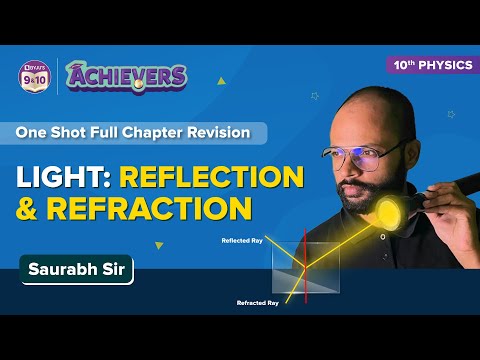Mirror, Mirror on the Wall. Do you reflect at all? We all use mirrors to look at ourselves if you drive a vehicle to look around and drive safely. How is this possible? Do you need a special material or will any surface do? You must have also noticed how you can see your reflection in shiny surfaces. So what exactly is the condition for reflection? Reflection of light follows the laws of reflection which we will discuss in this article.
Laws of Reflection
The most common example of the reflection of light in real life is the reflection of light off the shiny surface of a mirror. There are multiple laws of reflection elaborated further. When a ray of light strikes a plane mirror, the light ray reflects off the mirror. Reflection involves a change in the direction of the light ray. Reflection of light needs a few prerequisites; the reflecting surface has to be uniform and flat. This ensures that all of the light reflects in the same direction, thereby increasing the quality of the reflection you can see. The reflection of light from a rough surface from point to point varies hugely due to which we do not get a coherent reflected image but they do reflect. Light is known to behave in a very predictable manner. If a ray of light could be observed approaching and reflecting off of a flat mirror, then the behaviour of the light as it reflects would follow a predictable law known as the law of reflection.

The first image shows the reflection of light and the second image labels the angle of incidence and angle of reflection
Reflection of Light
In the image, you can see the ray of light entering from the top of the frame, hitting the reflective surface say a mirror and reflecting to the bottom of the frame. In the diagram, the ray of light approaching the mirror is known as the incident ray. At the point of incidence where the ray strikes the mirror, a line can be drawn perpendicular to the surface of the mirror. This line is known as a normal line. The ray of light that leaves the mirror is known as the reflected ray. The normal line divides the angle between the incident ray and the reflected ray into an angle of incidence created by the incident ray and the normal line and an angle of reflection between the normal line and the reflected ray. The law of reflection states that when a ray of light reflects off a surface, the angle of incidence is equal to the angle of reflection. The law of reflection holds true for rough surfaces as well. The law of reflection also states that ‘The incident ray, the reflected ray and the normal to the reflecting surface at the point of the incidence lie in the same plane.’

Watch the video and revise all the important concepts in the chapter Light Reflection and Refraction Class 10 |
Watch the video and solve the previous year questions in the chapter Light Reflection and Refraction Class 10 |
Did you find this article interesting? Please visit BYJU’S for more information. Join us and fall in love with learning.

Comments